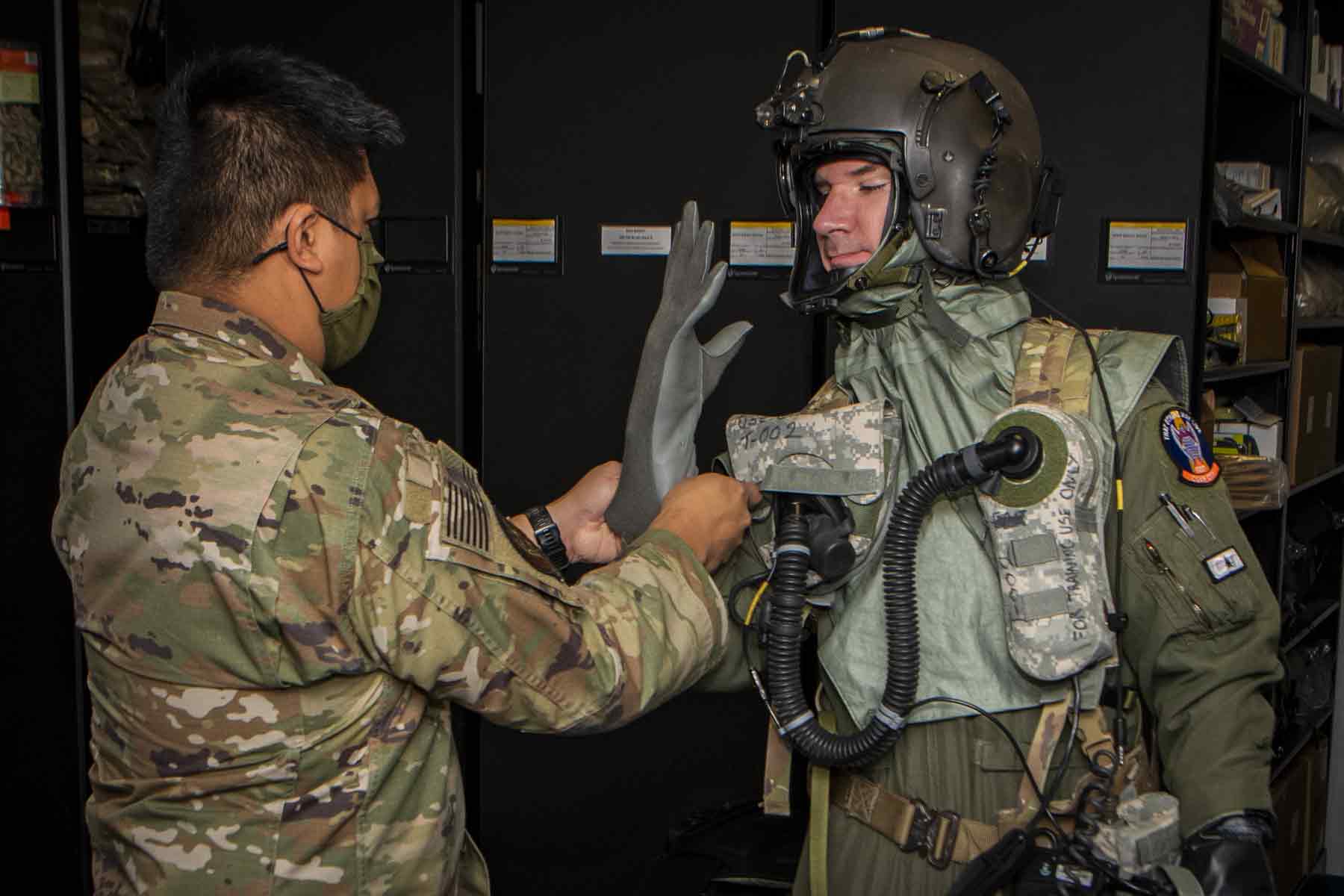
The U.S. Air Force is testing a specialized uniform and other gear meant to protect airmen in case of chemical, biological, radiological or nuclear, or CBRN, attacks.
Members of the 88th Test and Evaluation Squadron tried out the new Uniform Integrated Protective Ensemble, or UIPE, Air system on HH-60 Pave Hawk helicopters at Nellis Air Force Base, Nevada, last month, according to a news release.
The uniform includes a two-piece layered undergarment, gloves and respirator, among other items, the service said. The gear is expected to be distributed to units in 2024.
Read Next: Nearly Half of Female Soldiers Still Failing New Army Fitness Test, While Males Pass Easily
“This item will service aircrews for the U.S. Navy, Marine Corps, Army and Air Force, so our testing phase is critical,” said 2nd Lt. Gunnar Kral, a CBRN Defense Systems Branch systems engineer at the Air Force Life Cycle Management Center, in the May 7 release. The new equipment will replace the 66P aviation protection ensemble.
The new suit will provide better mobility as an undergarment and better regulate body temperature than its predecessor, reducing the chance of overheating while in the uniform, according to the announcement.
“Moving to an underlayer allows aircrews to use an outer layer they’re more familiar with, like their flight suits,” 1st Lt. Hunter Mangueira, an AF CBRN Defense Systems Branch systems engineer at the Air Force Life Cycle Management Center, said in the release. “We’re trying to make CBRN flight equipment similar to the flight crews’ regular mission set equipment, removing the learning curve and any hindrance when they conduct their missions.”
Pave Hawk units will be among the first to adopt the UIPE. The 88th, which falls under the 53rd Wing, is part of the Combat Search and Rescue Combined Test Force and is responsible for all test, evaluation and tactics development for the service’s CSAR mission.
Follow-on integration is slated for crews within the KC-135 Stratotanker, F-16 Fighting Falcon and C-130 Hercules communities.
In 2018, the service began testing upgraded masks for Pave Hawk and UH-1N Huey helicopter crews. The masks are meant to safeguard aviators’ eyes and skin and improve respiratory function in the event of a chemical attack, according to a report from Air Force Times.
The Air Force is also exploring other uniform and gear enhancements for its pilots and support crews.
In March, Oros Apparel, a subsidy of Lukla Inc., received a Small Business Innovation Research Phase I contract to explore how the company’s SolarCore technology can be integrated into a long-range flight suit for pilots flying above 30,000 feet; the suits would act as an added layer of protection at altitudes where air temperatures can range from -40°F to -70°F, according to the company.
The service earlier this year posted a list of its priorities for next-generation aircrew apparel; heated flight suits were near the top.
The service wants to reduce the bulky clothing layers flight crews add for warmth, so it’s looking for an “electrically or electrical-heated” underlayer or outer layer that would cover an airman’s feet, hands, torso and legs, Air Force Materiel Command spokesman Brian Brackens told Military.com in March.
— Oriana Pawlyk can be reached at [email protected]. Follow her on Twitter at @Oriana0214.
Related: The Next Major Battlefield Threat Facing US Troops May Be Undetectable
© Copyright 2021 Military.com. All rights reserved. This material may not be published, broadcast, rewritten or redistributed.
